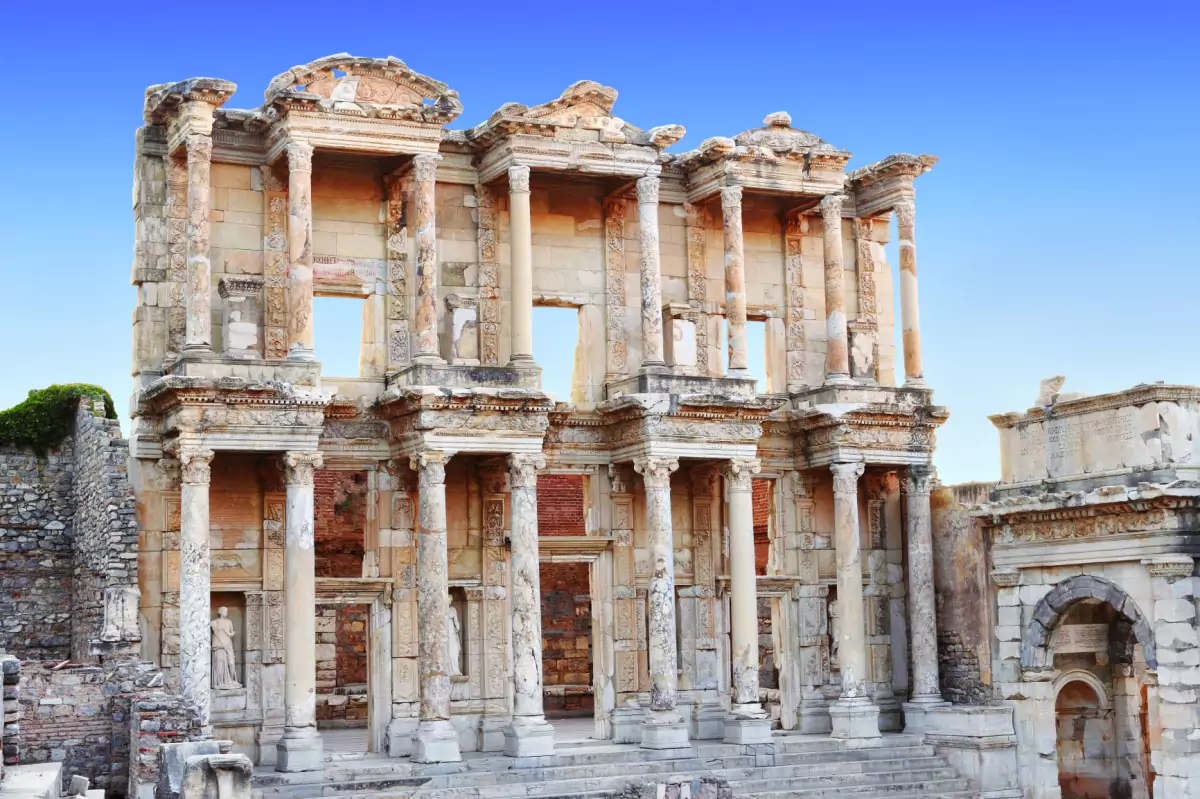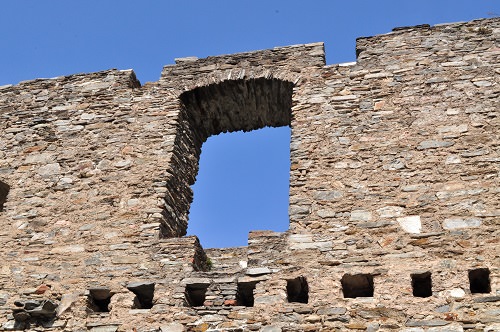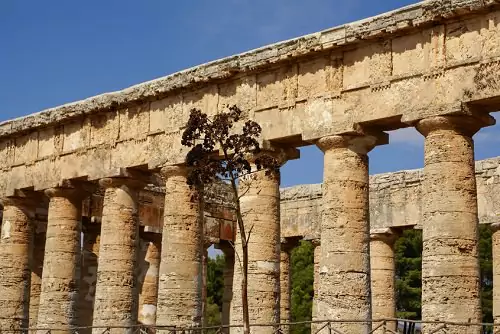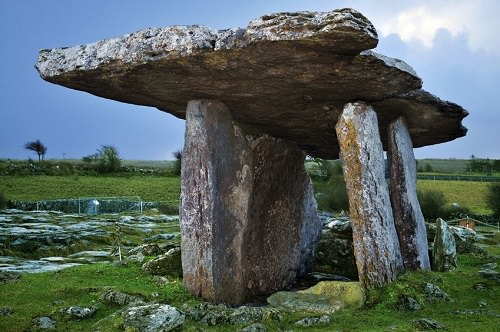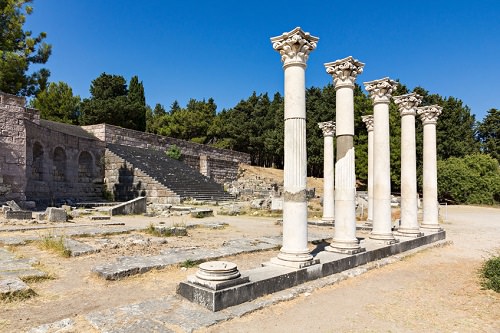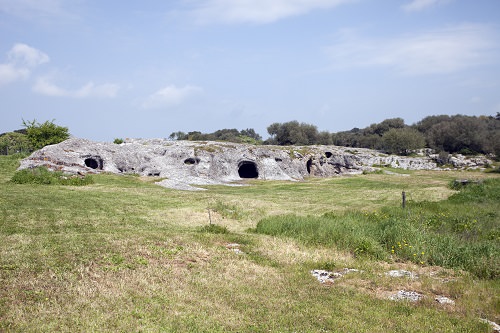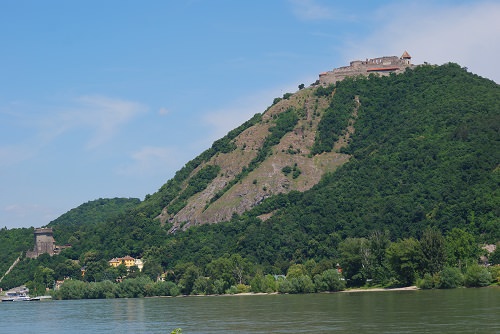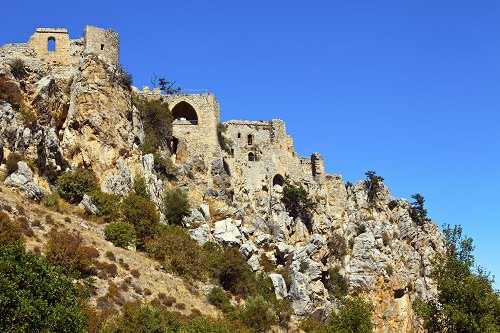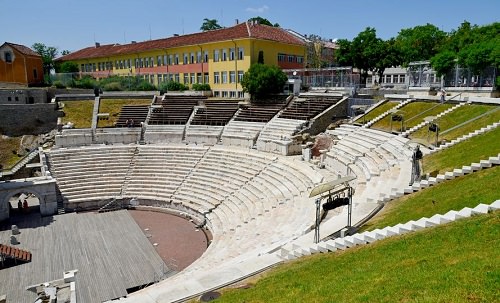Europe has a rich history that dates back millennia. This isn’t history that can be adequately covered by a visit to Stonehenge or a handful of other ruins. To truly explore the history of the land, you need to get off the beaten track and look where no one else is looking. Below is the list of the lesser-known ancient ruins in Europe.
1. Grasburg, Switzerland
To most tourists doing the rounds of Europe’s ancient ruins, Switzerland doesn’t figure prominently on the map. The ruins of Grasburg Castle, though, are well worth a visit. Built-in the 11th century, it’s one of Switzerland’s most wonderful castle ruins. This castle is still impressive because of its size.
According to history, many years ago, there lived a feudal tyrant Count Amadeus, who offended his subjects in every possible way. Finally, his life ended when a servant girl could no longer endure such humiliation and pushed him into the churning waters of the River Sense.
In its time, it is said to have been the entertainment center of the nobles of Burgundy. The ruins are only partially restored today. Locally, it is a popular destination for hiking groups and schoolchildren.
2. The Temple of Segesta, Sicily
On the northwest of the island of Sicily, around 75 km from Palermo, along the highway that connects the city to Trapani, is a spectacular ancient ruin – the Temple of Segesta. The temple, which looks something like the Parthenon from a distance, is magnificent and well-preserved. It was supposedly built in 430 BC. e. by an unknown Greek architect and miraculously survived despite the destructive invasions of the Vandals experienced over the centuries, the seizure of land by Muslims, and the power of the Normans.
It is fascinating that the temple, for the construction of which a lot of money and effort was spent, most likely was not used for its intended purpose. The reasons for this were the lack of a Greek majority among the city’s inhabitants and unfinished construction. The temple complex in Hellenic culture was assigned the role of a glorious but still decorative element around the sanctuary or altar.
Nearby are the ruins of a spectacular amphitheater. To this day, it is used for concerts and plays. The grandiose cult object is located on a hill; to get into it, you have to climb an ancient staircase with wide gentle steps.
3. The Poulnabrone Dolmen, Ireland
Ireland’s vast, stark plains have dozens of ancient sites dating to the Neolithic period. Some of them resemble Stonehenge in their basic design. Others are mere caves. In barren, rocky County Clare stands the Poulnabrone Dolmen, a solitary, large, irregular-shaped stone construction that marks a burial chamber. The thought that this simple structure has stood at this location for thousands of years can be a moving one.
The construction is an almost four-meter slab based on two vertical slabs about two meters high. The entrance is oriented to the North. Despite the fact that over time the structure has weakened and a crack has appeared on one of the slabs, the monument is striking in its monumentality and universal simplicity.
The Poulnabrone Dolmen is one of the most visited places in Ireland. In addition, this is a favorite place for photographers. The most suitable time to visit this monument and take photos is early morning in the off-season.
4. The Temple of Asklepieon, Kos
In ancient Greece, an Asklepieon was a temple to Asclepius, the god of healing. At one point, there were 300 Asklepios around the country. Today, though, only a handful of ruins are in reasonable shape.
One of them is the Asklepieion of Kos, on a Greek island of the same name that’s very close to Asian Turkey. The largest temple of all the Greek Asklepios is considered the main attraction of the island of Kos. It was dedicated to the god Asclepius (Esculapius), the patron saint of medicine. It was intended to serve him and heal the townspeople. Doctors were also priests.
The Asklepieion of Kos is a beautifully preserved temple set in idyllic countryside. It’s great for a day’s exploration. These Ancient ruins are located in the center of the island, 4 km east of the city of Kos, on a small mountain.
More: 10 Most Beautiful Places in the World
5. Pottu Codinu, Sardinia
Unlike the other sites on this list, the Pottu Codinu in Sardinia, Italy, isn’t a castle, a temple, or a theater. It is far more ancient than the other sites, too. The Pottu Codinu is an ancient burial ground dating to 3,500 BC. The ruins are situated on the back roads of Sardinia and are completely unmaintained, open to the elements. These ruins aren’t actual buildings, and rather, they are man-made caves in the ground.
The real connoisseurs of culture, art, and history can visit these ruins at any period of the year. But the best time for lovers of beaches and the sea is from May to September.
6. Visegrad, Pest County, Hungary
Many castles, palaces, and fortresses are, of course, one of the hallmarks of Hungary. Visegrad, a town on the Danube in Hungary, is home to the small but impressively fortified Visegrad Castle. It was built by King Béla IV but destroyed after raids by the Turks. Today, the ruins of the castle are open to the public.
The Visegrad Fortress is one of the most mysterious and enigmatic fortresses in Hungary, around which there are many legends. It is with Visegrad that the name of the world-famous bloodsucker, Count Dracula, is associated.
Currently, there is a museum on the territory of the Visegrad Fortress, which contains artifacts found on its territory. Stunning landscapes open from here: climbing the old tower, on a warm summer day, you can admire the panorama for a long time, opening from the steep bank of the majestic river to the bend of the Danube.
7. The Castle of St. Hilarion, Northern Cyprus
Perched atop a mountain in the Kyrenia range, the Castle of St. Hilarion is one of Europe’s most dramatic ancient ruins. The castle isn’t named after the Palestinian monk St. Hilarion the Great, but after another saint of the same name. The castle dates to the 11th century. At first, there was only one monastery on this site. Then a fortress with a palace was built around it. Kings lived here, battles took place, and the fates were decided.
The Castle of St. Hilarion is considered one of the most picturesque residences of the Cypriot rulers. Although today the castle remains, in fact, the ruins, it remains interesting to visit. The huge scale of development, unusual layout, and many rooms are the main features of the castle of Hilarion. The interiors of the castle are fascinating to walk through.
Visiting this attraction is an absolute pleasure for tourists: the views of the sea and the island from here are magical, and amazing photos and vivid impressions are guaranteed to every guest.
8. Ephesus, Asian Turkey
Ephesus was a Greek city on the Ionian coast of Asian Turkey that was inhabited for 500 years, starting in the 10th century BC. Unlike the other ruins on this list, Ephesus is a whole city. This ancient city is an antique pearl of Turkey. Its walls have witnessed many battles and survived world empires’ rise and fall.
Ephesus is a unique archaeological site, which is known primarily for the sights of the Hellenistic and Roman periods, as well as early Christian buildings. The ruins contain dozens of temples, fountains, libraries, and streets, all preserved in impressive shape. The amphitheater, in particular, was large enough to be comparable to a small, modern stadium. The fascinating landmarks are Celsus Library, the Temple of Artemis, House of the Virgin Mary, Temple of Hadrian, Temple of Domitian, and Theater.
The ruins will not leave you indifferent — you will feel the echo of the past glory on its streets and plunge into the history of distant times. The unique city-museum, classified as a UNESCO heritage site, today gathers thousands of tourists worldwide on its territory. Yet, even though time has not spared this attraction, many ancient ruins are worth visiting.
9. Pula, Croatia
Pula is an ancient waterfront city in Croatia. It is the largest city in the region. The untouched natural surroundings of the city, located under seven hills overlooking the Adriatic, have a magical effect.
Charming Pula, surrounded by olive groves, vineyards, and oak forests, keeps traces of the ancient past and is widely known for temples, arches, amphitheaters, and gates dating to the Middle Ages and even prehistoric times.
From the Pula Arena and the Chapel of Mary Formosa to the Pula Amphitheater, the city has some of the finest ancient ruins you are likely to encounter anywhere. In the Middle Ages, jousting tournaments were held in the Arena. Today it is used for various festivals and sporting events. In the basement under the Arena, where gladiators used to prepare for battle, there is a museum dedicated to wine and olive oil production in ancient times.
The most striking sights of Pula also include the triumphal arch of Sergius, the temple of Augustus, the Archaeological Museum, the Town Hall, the Kastel fortress, the Museum of Modern Art, the Forum, the house of Agrippina, the Austrian underground galleries, the huge aquarium in the Verudela fortress and much more.
10. The Plovdiv Roman Theatre, Bulgaria
The Plovdiv Roman Theatre, an ancient amphitheater that dates back to 100 AD, is a ruin that isn’t well-known outside of Plovdiv, the second largest city in Bulgaria. With 28 rows of marble seats arranged in horseshoe formation and a three-story stage building, Plovdiv was one of the best-built theaters of its time. After repeated incidents of severe damage over its history, the theater today has been beautifully restored. Hosting performances each night, the Plovdiv Roman Theatre is in demand once again, probably as it was millennia ago.
On the stage, decorated with columns and full-length figures at the back, various events were held in ancient times: elders’ meetings, gladiator fights, musicians singing, poets reciting poems, and other entertainment events.
The theater was discovered only in the early 1970s due to a landslide. It caused major archaeological excavations, including the removal of approximately 4.5 m of earth covering what was left as a hidden landslide.
More: 11 Amazing Places to Visit Before They Disappear
While tourists looking for a way to connect with the ancient past could easily see the well-known ruins of Rome, Greece or elsewhere, there’s something to be said for searching out places that aren’t known to the world at large. It can be a more intimate feeling, gazing upon an ancient ruin when it isn’t overrun with tourists.

